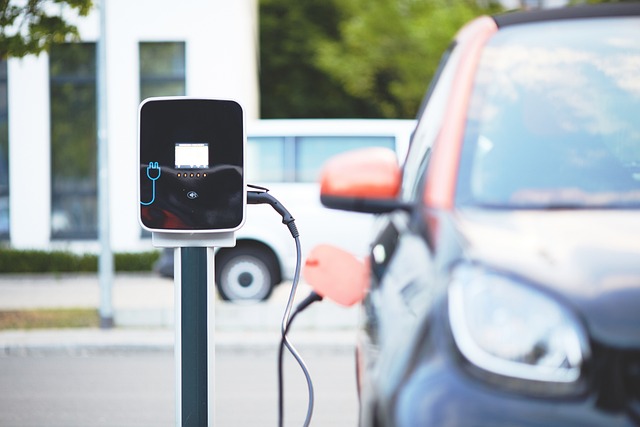Learn About What Makes Tiny Electric Cars So In Demand
The rising popularity of tiny electric cars represents a significant shift in urban mobility preferences. These compact vehicles combine environmental consciousness with practical city living, offering an innovative solution to modern transportation challenges. As cities become more congested and environmental concerns grow, these diminutive electric vehicles are emerging as a smart choice for sustainable urban mobility, providing efficient transportation while minimizing environmental impact.

The popularity of tiny electric cars has surged in recent years, transforming from niche vehicles to mainstream transportation options in urban environments. These compact electric vehicles (EVs) represent a significant shift in how people think about mobility in densely populated areas. With their distinctive blend of efficiency, practicality, and environmental benefits, tiny electric cars are addressing multiple challenges faced by modern city dwellers. Their growing appeal spans diverse demographics, from eco-conscious millennials to practical-minded commuters seeking affordable transportation alternatives.
Modern Features: Practical and Stylish Solutions
Tiny electric cars have evolved far beyond basic transportation pods, now offering impressive features that rival their larger counterparts. Many models come equipped with touchscreen infotainment systems, smartphone integration, and advanced driver assistance features. Despite their compact exteriors, manufacturers have prioritized interior comfort with innovative space-saving designs, including foldable seats and multifunctional storage solutions. The styling has also matured, with customizable color options and sleek, contemporary aesthetics that appeal to design-conscious consumers.
The technological integration in these vehicles extends to connectivity features that enhance the ownership experience. Many tiny EVs offer dedicated mobile apps for remote monitoring of charging status, climate control pre-conditioning, and maintenance alerts. Some models even incorporate regenerative braking systems that recover energy during deceleration, extending their range while reducing brake wear—a practical feature for stop-and-go city traffic.
Environmental Impact: A Sustainable Choice for Urban Living
The environmental advantages of tiny electric cars make them particularly attractive in an era of heightened climate awareness. Their zero tailpipe emissions contribute to improved air quality in congested urban areas where pollution levels often exceed healthy thresholds. The compact size of these vehicles means they require fewer raw materials to manufacture, further reducing their ecological footprint compared to standard cars.
Energy efficiency represents another significant environmental benefit. Tiny electric cars consume substantially less electricity than larger EVs, making them less resource-intensive to operate. This efficiency extends to their entire lifecycle, with some manufacturers implementing sustainable production processes and recyclable materials. Many cities now recognize these environmental benefits by offering incentives such as free parking, reduced tolls, or access to restricted traffic zones for electric vehicle owners, further enhancing their appeal.
Compact Design: Navigating City Streets with Ease
The diminutive dimensions of tiny electric cars provide distinct advantages in urban environments. Their small footprint allows drivers to navigate narrow streets and fit into parking spaces that would be inaccessible to conventional vehicles. This maneuverability is particularly valuable in historic city centers with limited infrastructure designed long before the automobile era. The tight turning radius of these vehicles makes them exceptionally agile in congested traffic conditions.
For city residents, the parking benefits alone can justify the switch to a tiny electric car. Some models are so compact they can park perpendicular to the curb, fitting in spaces between conventionally parked vehicles. This feature addresses one of urban drivers’ most significant pain points—finding suitable parking in densely populated areas. The reduced size also contributes to decreased traffic congestion when adopted at scale, potentially improving mobility for entire communities.
Cost Considerations and Market Options
The financial aspects of tiny electric cars present compelling advantages for budget-conscious consumers. While purchase prices vary significantly based on features and specifications, many models offer lower entry points than standard electric vehicles. Operating costs provide additional savings, with electricity expenses typically amounting to a fraction of equivalent gasoline costs. Maintenance requirements are also reduced, with fewer moving parts to service or replace compared to internal combustion engines.
Several manufacturers have established themselves in this growing market segment, each offering distinctive approaches to tiny electric mobility:
| Manufacturer | Model | Range (miles) | Starting Price (USD) |
|---|---|---|---|
| Renault | Twizy | 62 | $9,500 |
| Smart | EQ ForTwo | 58-81 | $23,900 |
| Citroën | Ami | 43-47 | $6,000 |
| Wuling | Hongguang Mini EV | 75-106 | $4,500 |
| Microlino | Microlino 2.0 | 78-143 | $14,000 |
Prices, rates, or cost estimates mentioned in this article are based on the latest available information but may change over time. Independent research is advised before making financial decisions.
Beyond the purchase price, potential buyers should consider available incentives that can significantly reduce acquisition costs. Many countries offer tax rebates, grants, or subsidies for electric vehicle purchases, though eligibility for tiny EVs varies by region. Insurance costs typically favor these vehicles due to their lower power output and replacement value, while some insurers offer specific discounts for electric vehicles.
Safety and Reliability
Despite their small stature, manufacturers have prioritized safety in modern tiny electric cars. Many models incorporate reinforced chassis designs, multiple airbags, and electronic stability control systems. Advanced models feature pedestrian alert sounds to compensate for their quiet electric operation in urban environments. While these vehicles may not offer the same mass-based protection as larger cars in collisions, their agility can help avoid accidents altogether.
Reliability data on tiny electric cars continues to improve as the market matures. With fewer mechanical components than combustion vehicles, electric powertrains generally experience fewer failures. Battery longevity remains a primary consideration, with most manufacturers offering warranties ranging from 5-8 years or 60,000-100,000 miles on their battery systems. The simplicity of these vehicles’ designs often translates to lower long-term maintenance costs and fewer potential failure points.
The demand for tiny electric cars reflects shifting priorities in personal transportation. As urbanization continues worldwide and environmental concerns mount, these vehicles offer practical solutions that align with contemporary values. Their combination of affordability, convenience, and sustainability positions them not as compromised alternatives to conventional cars but as purpose-built solutions for modern mobility challenges. The growing market reflects a broader recognition that transportation needs are evolving, with efficiency and appropriateness increasingly valued over size and power.




